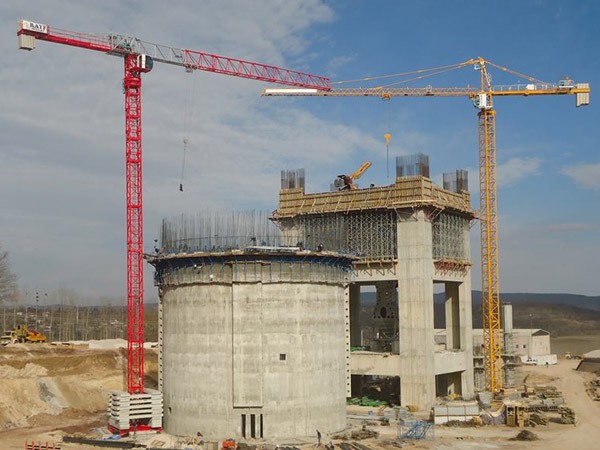Sliding Mold Solutions
- Home
- Sliding Mold Solutions High Quality | 26 Years Experiences
- Concrete Chimney for Factory
- Bridge and Viaduct Pillar
- Continuous Emission Monitoring Systems
- Concrete Silo Solutions
- Crane Solutions
- Minaret (Sliding mold) Solutions
- New Cement Factory Construction Solutions
- Old Cement Factory Restoration Solutions
- Post Tension Solutions
- Power Plant (Thermal, Solar, Energy, Wind) Solutions
- Raw Meal Silo Solutions
- Sliding Mold Solutions
- Steel Construction Solutions
- Treatment and Digestion Silo
- Slip Form Solutions
- Special Production Machinery Manufacturing
- Freight Elevators
- Waste Water Treatment Plant
- Refractory (Fire Bricks)
- LNG Terminal
- Climbing Formwork Solutions
Sliding Mold Solution
Sliding Formwork is mostly used in high buildings where reinforced concrete curtain density is high. It shortens the construction period of high buildings. It is also used in places where uninterrupted concrete pouring is required. In this way, cold joint formation is realized in the curtains. In order for the system to be applied correctly, the 24 work program must be planned very well. While the formwork moves only in the vertical direction in spiral and prismatic structure types, it can be twisted inward or partially outward if needed. The sliding formwork system is also used in rectangular, square, hyperbolic and cylindrical structures. The sliding formwork is so named because small but continuous rises give the impression that the formwork is sliding over a larger time interval.
The sliding formwork system consists of a system in which the molds are continuously raised by hydraulic equipment. In this case, depending on the setting time of the concrete, it can be raised approximately 150-300 mm per hour. In this process, the concrete will be able to support itself in a very short time. Depending on the project details and weather conditions, the balance and setting status on the formwork is monitored by the supervisors by using setting accelerators or setting retarders in the concrete.

More About Sliding Mold
The formwork is installed with templates (brackets) prepared in accordance with the geometric shape of the building to be constructed. Working in the system are spur beams (NPU100), steel frames (spur) to the carcass, and clamping bolometers, interlocking steel panels (120cm) made at a certain height and supported by 10*20 cm braces. The brackets connected to this system form a working area. Hydraulic jacks (approximately 1.5 meters apart), which rest on the spur beams and allow the system to move as a whole, allow the system to be carried upwards with climbing rods in the concrete. Concrete pouring, door and window formwork works on the wall surface, placement of post-tensioning sheaths, if any, embedded steel installation, installation of bolometers and the continuity of the work form a whole. As the formwork moves upwards, it is filled with concrete without stopping but at controlled intervals. The casting, reinforcement and control works are completed in the same place. Thanks to the suspended scaffolding, which is integrated with the formwork, faulty or defective surfaces are repaired before the concrete is completely set and curing is carried out for 24 hours with the help of various chemicals. After these processes, it is ensured that a solid reinforced concrete structure that has a smooth appearance from beginning to end and has reached the required resistance is created.
- High Quality Systems
- Fast Building
- Experienced Team
Advantages of Using Sliding Mold
- It rises at high speed in the produced facility and the project is completed quickly with significant time savings. It is 4 to 7 times faster than traditional methods.
- Since there are no cold joints in the construction with the sliding formwork system, the formation of a weak zone in the wall is not allowed. This ensures that the load, which is accepted in static calculations, is equally distributed to all sections in accordance with the distribution graph as planned.
- There is no need for an extra means of transportation such as manlift, crane, and elevator in the area since access to the formwork platform is provided by a TSN Certified ladder tower.
- Since the mold is lifted with hydraulic jacks, the use of cranes in the area is minimal.
- Since the sliding formwork system has its own areas, the appropriate value of scaffolding and working area is used in operation. Since there is no unnecessary material to be stored, it contributes significantly to the establishment of cleanliness and order in the construction site.
- In the drawings, a unity is provided in the curtain wall parts. Much smoother curtain wall sections are obtained with sliding formwork compared to other formworks.
